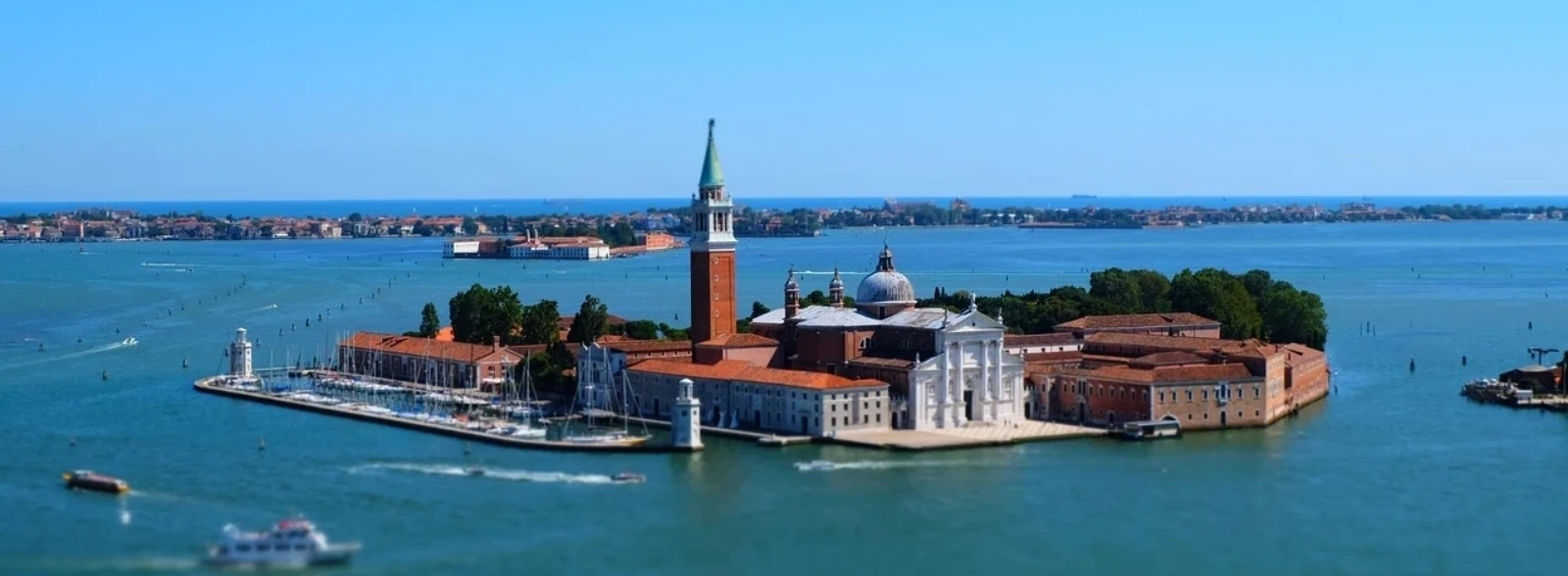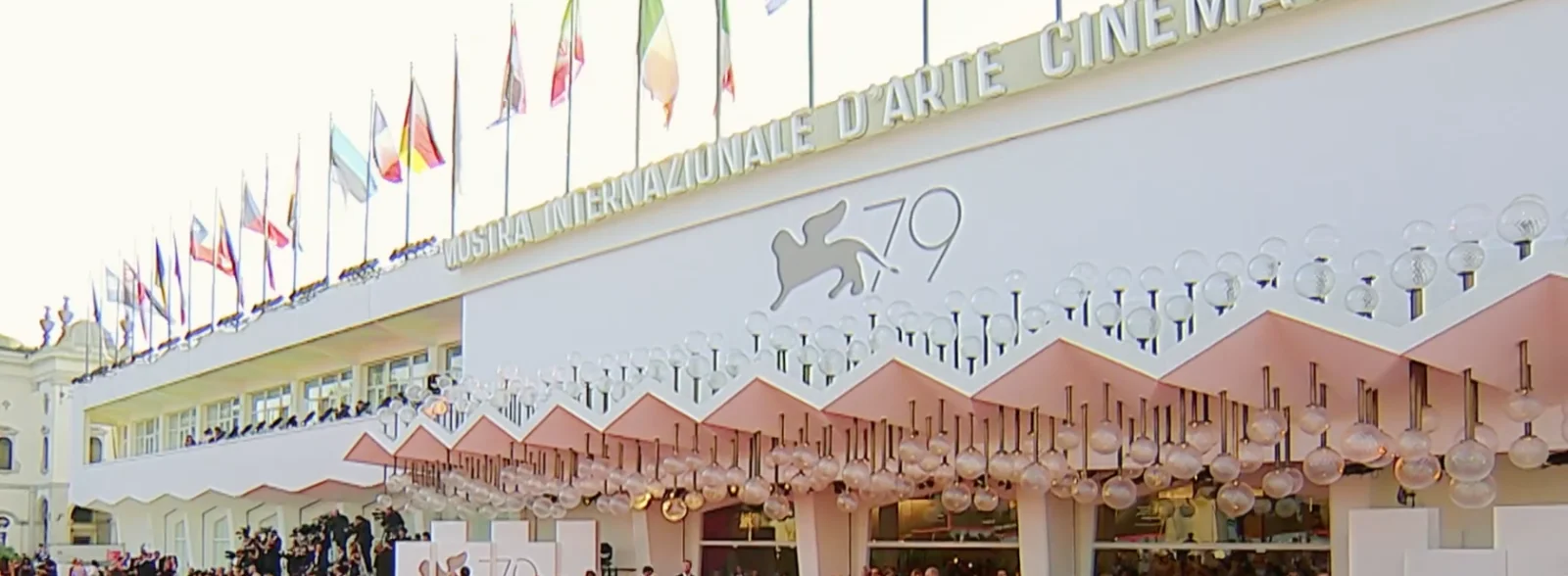The beauty of San Giorgio Maggiore: the mystical side of Venice

The beauties of San Giorgio Maggiore represent the perfect union between three very different, but connected worlds: nature, faith and architecture.
It can be reached in just three minutes by vaporetto from St. Mark’s Square (line 2 from San Zaccaria to the railway station) this island is definitely a destination you should include in your schedule.
The mystical atmosphere will be perceived when you’ll get off the boat and you’ll find yourself in front of the great San Giorgio Maggiore church: you’ll be ready to discover the most remote places of this fascinating island.
The history of San Giorgio Maggiore
Back in time, the island of San Giorgio Maggiore was called Isola dei Cipressi (Cypress island) because of the abundance of these trees, but as the years went by, the little island started taking its name from a small wooden church, founded between the eighth and ninth century. This sacred place was dedicated to St. George, protector of the Italian Military and Civilian Cavalry, and to distinguish it from the San Giorgio in Alga island, it was named “Maggiore“.
Owned by a noble Venetian family, in 982 the island was given to the Benedictine order by the Doge Tribuno Memmo. After reclamation works on the marshland, Father Giovanni Morosini decided to build a monastery adjacent to the small church: a reference point for young people with the desire to undertake religious life.
Thanks to the abundant donations from Venetian aristocratic families, the monastery grew to such an extent that it became one of the most influential places in Europe in the theological and cultural fields.
Unfortunately, the prestige didn’t last long, and the city of Venice was handed over to the French Government with the Treaty of Campoformio of 1797. The island changed dramatically: the mystical beauty of the Benedictine life disappeared, and the sacred space became a military garrison first, and then a free port.
In 1951, the Italian Government granted the spaces of the island to the wealthy Conte Vittorio Cini who founded the Giorgio Cini Foundation, dedicated to his son who died in a plane crash. An important restoration project led to a redevelopment of the monastic complex, and the island found again the splendor of the previous centuries.
Nowadays, the Foundation hosts numerous cultural initiatives, from exhibition projects to concerts, and life on San Giorgio never stops.
The beauties of San Giorgio Maggiore: faith and architecture
You can start your visit from the famous Basilica of San Giorgio Maggiore. With this projects, the celebrated architect Andrea Palladio built the church as a counterpart to St. Mark’s Square, located on the opposite side of the basin.
Using Istria stone, Palladio created an architectural structure inspired by ancient Roman baths: he rejected easy and predictable solutions, and the result is unique.
The church hosts numerous paintings: l’Ultima Cena (1592-1594) by Jacopo Tintoretto, la Madonna col bambino e Santi (1708) by Sebastiano Ricci, as well as paintings by Palma il Giovane, Domenico Tintoretto and Jacopo Bassano.
The refectory, restructured by Palladio in 1560, is next to the basilica and it’s possible to visit it. Originally, the majesty of this space was given by a large canvas placed on the wall at the end of the room: le Nozze di Cana (1562) by Paolo Veronese. It is easy to think that the work was commissioned to Veronese in relation to the Palladian architectural project, but in 1797, at Napoleon’s behest, the painting was stolen and transferred to the Louvre Museum in Paris.
Don’t forget to climb the top of the San Giorgio Maggiore bell tower: in a few seconds, an elevator will take you to the belfry’s top and you’ll be looking over the entire city of Venice, and you might even be able to see the Euganean Hills in the Province of Padua.
The beauties of San Giorgio Maggiore: nature and works
Despite the numerous redevelopment works of the San Giorgio Maggiore monumental complex, nature appears to be the undisputed protagonist.
You can find the green soul of the island in both cloisters located inside the monastery: the first, the Chiostro degli Allori, was built during the Renaissance by architect Andrea Buora, while the second, the Chiostro Palladiano also called Chiostro dei Cipressi, was finished at the end of the 17th century, on a project by Andrea Palladio.
The Chiostro degli Allori, the dormitory and the Capitular Hall form the oldest part of the whole San Giorgio Maggiore monastery: at the center of this cloister, you can admire a well curb with by a bas relief depicting Saint Lucia. Her remains were preserved inside the monastery until the 13th century, then moved to Cannaregio.
The Chiostro dei Cipressi was built by one of the most famous architect of the time, Andrea Palladio, who revolutionised most of the architectural works on the island. The linearity of the decorative elements and topiary make this a place of contemplation, suitable for those who are looking for an answer or a moment of alternative relax.
The space outside the monastery is dominated by the nature as well: the Teatro Verde or teatro di verzura, a recent building that can seat 1484 people.
Built on the classical Greco-Roman model, thisen plein air amphitheater was made using mainly Vicenza white stone, intercalated by boxwood backrests.
Over the years, the Teatro Verde has hosted numerous shows staged by the most famous European theater companies. For a short period of time, it was managed by the Biennale di Venezia, that organized great dance shows.
The beauties of San Giorgio Maggiore: playful culture
San Giorgio Maggiore island also has a library, an extraordinary source of information with documents: more than 300,000 volumes all precisely stored in the spaces dedicated to universal knowledge.
The ancient dormitory of the Benedictine friars has become the heart of the Cini Foundation library complex: the Manica Lunga. This long artery running through building, together with the famous 17th-century library, designed by architect Baldassare Longhena, is the perfect place for study and concentration.
The library is accessible to the public from Monday to Friday and there is the possibility to consult ancient books in a dedicated area.
If you need to take a breath of fresh air, after browsing through the old volumes in the libraries, you should visit the famous labyrinth at the back of the monastery.
The Labirinto Borges was created by English architect Randoll Coate in memory of the Argentine writer Jorge Luis Borges: a maze built with 3200 box trees and a single exit. Along the way, you’ll find numerous objects of bourgeois inspiration that incessantly celebrate the literary works of the writer.
A challenge that will take you for a walk of at least a kilometer, or much longer, if you get lost!
The beauties of San Giorgio Maggiore: the appointments you can’t miss
The appointment that you certainly can’t miss is the sunset, that you can admire from the top of the bell tower: in spring, when the sky is clear of clouds, it’s easy to take a great picture.
From the top of the Basilica of San Giorgio Maggiore you’ll be able to see most of Venice: Giudecca Island, the Punta della Dogana, the Grand Canal, St. Mark’s Square with its bell tower and the Palazzo Ducale, up to the Gardens and Lido Island.


